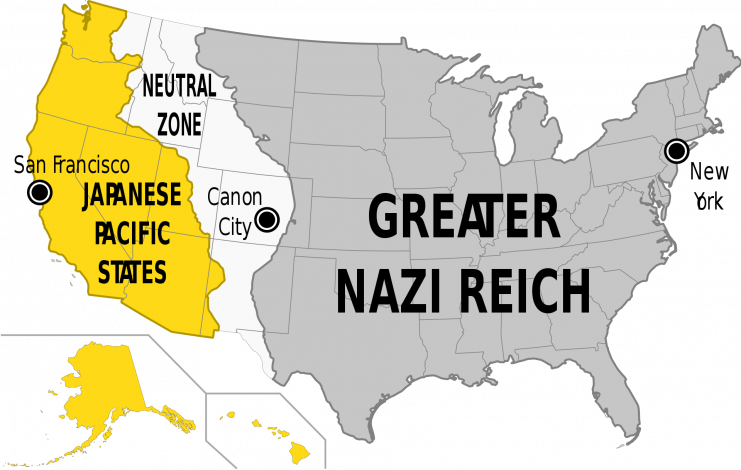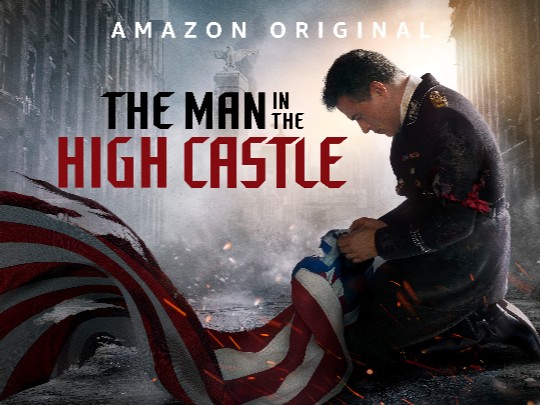The Man in the High Castle is a television series on Amazon set in a future where the United States was conquered by Nazi Germany and Imperial Japan.
It recently began airing its final season. Due to the unique setting of the show, a number of props were designed that reflected Nazi and Imperial Japanese symbolism.
Actress Chelah Horsdal, who plays Helen Smith in the series, posted a video on Twitter which showed a prop with a swastika on it get chopped into tiny pieces.

Those pieces are then placed into boxes containing what appears to be the pieces of other similar props. “Burn Pile” appears as a caption on the screen near the end of the clip. Horsdal wrote that all swastikas used in the show were destroyed.
Super satisfying…
Reminder that High Castle proudly destroyed all the swastikas that were produced for the show. pic.twitter.com/ecW445OWhB
— Chelah Horsdal (@chelahhorsdal) November 16, 2019
In a follow-up tweet, the actress stated that all props with the Japanese Rising Sun emblem were similarly destroyed. In her words, “All flags and symbols that were in any way offensive or sensitive: destroyed.”
Some people however were offended that the props were destroyed. They claimed that the items could have been recycled or saved for use in future productions.
As a response to the criticism, Horsdal wrote, “Who knew the position ‘Nazi swastikas are bad’ would be so controversial.”
The show is loosely based on a novel by Philip K. Dick. In the story, the United States is occupied by Nazi Germany and the Japanese Empire after the end of World War II.
When Amazon debuted the first season, they were criticized for decorating the New York subway system with Nazi and Imperialist Japan imagery.
Amazon ended the campaign after New York City Mayor Bill de Blasio called the ads “irresponsible and offensive.”

The show consistently received high marks for each of its four seasons. Critics praised the unique story line and the richness of the world created on the screen.
The way to deal with Nazi symbolism has been a difficult one for governments to handle. On the one hand, there is a desire to protect the groups that were targeted in the Holocaust and who may be deeply offended and traumatized by such symbols.
On the other hand, there is a desire to hold accountable those who committed war crimes during World War II and make current and future generations aware of the consequences of those acts.
In Germany, displaying Nazi symbols immediately after World War II was a way for former Nazi party members to keep Adolf Hitler’s ideals alive.
Today, neo-Nazi groups use the symbols in the same way as well as using them to hurt the people who belong to groups that were targeted by the Holocaust.
To protect the rights of the Holocaust victims, West Germany passed strict laws about using Nazi symbols and even discussing what occurred under Nazi rule.
When students who were born after World War II complained that they were not being taught about what occurred in the war, changes to the laws were made which encouraged education the acts of the Nazis about and using Nazi symbols for educational, artistic, and scientific purposes.
Under these guidelines, shows like The Man in the High Castle have been allowed to air in Germany with Nazi symbolism intact. It was only last year when video games were allowed the same freedom.
As time passes and World War II becomes more distant in our memories, the challenges of how to deal with the symbolism of oppressive regimes will change.
Another Article From Us: Woman Reunited With Jewish Family She Sheltered During Holocaust
However it will always be worth the effort to find the right balance between education, expression and protection.
